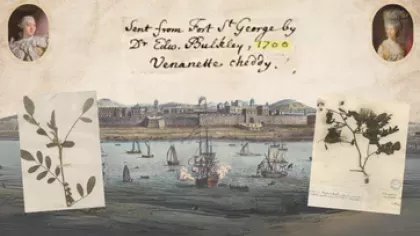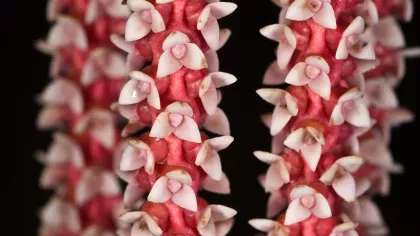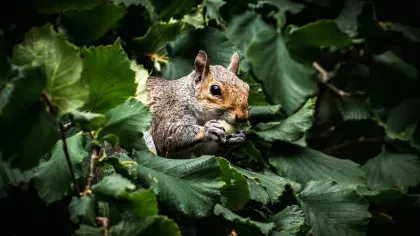21 August 2017
Take a look at the science in Kew’s Herbarium and Library
Why opening Kew’s buildings and rare plant and botanical art collections to the public is an important part of our work

What is Open House?
Open House is a free architectural event celebrating London’s amazing buildings, many of which open their doors to the public during the third weekend in September each year. Buildings range from small private houses to grand government departments such as the Foreign Office or the Treasury. This year, Open House takes place on the weekend of 16-17 September and will include Kew’s historical Herbarium and Library.
Why Kew?
Architecture is so much more than just buildings – although Kew has some great structures to show off, architecture also involves why buildings were designed the way they were and how people use them today. This event gives Kew scientists the opportunity to talk about the globally significant plant collections we use as a part of our research, the buildings designed to house them, and the science stories past and present that these collections generate.
The Kew Herbarium and Library
The first purpose-built plant storage and work area in the Herbarium dates from 1877 and houses around one million dried plants from around the world. It is a galleried structure with spiralling Victorian staircases and large windows that maximise daylight, as gas lamps were considered too much of a fire risk in the past. The current layout dates from 1903, when fire-proof concrete floors were laid down and storage space expanded.
An extension of the Herbarium in 2010 by Edward Cullinen Architects has provided secure storage for the most valuable of the Kew Library’s 300,000 books, 200,000 prints, drawings and archival materials as well as a new and expanded climate-controlled herbarium space. The now much larger Herbarium contains around seven million dried plant specimens representing most major groupings of plants (95% of plant genera) and the majority of the world’s 380,000 vascular plant species (such as flowering plants, conifers and ferns).
The collections behind the buildings
The Open House weekend allows Kew the ability to share with the public its plant collections made by 19th century luminaries such as Charles Darwin, Alfred Russell Wallace, Speke & Grant on their journey to the source of the Nile, and Richard Spruce in the Amazon, amongst many others. Many of these collections are the first scientific records ever made from remote parts of the globe and Kew is keen to enable the public to see first-hand these remarkable artefacts. There is still plenty we can learn from these early explorations, and they still influence our research today.
The stories behind the books
Some of Kew’s scientific focus today is on studying the wild relatives of common global crop plants such as coffee and yam. This work enables plant breeders to access naturally-occurring useful traits such as disease or drought resistance from wild plants and breed them into the crops of today. Interestingly, 19th century explorer David Livingstone was way ahead of the game. One of the remits of his government-sponsored Zambesi Expedition of 1858-64 in southern Africa was to develop agriculture in the region. Many of Kew’s 1,400 specimens and 300 drawings from this expedition are of edible plants, such as from the cucumber family, with potential as future food crops.
Come along to Kew’s open house this year, and you won’t just get a chance to look around the buildings and see some of the collections, you will also hear stories about our global research and how it impacts on your daily lives.






